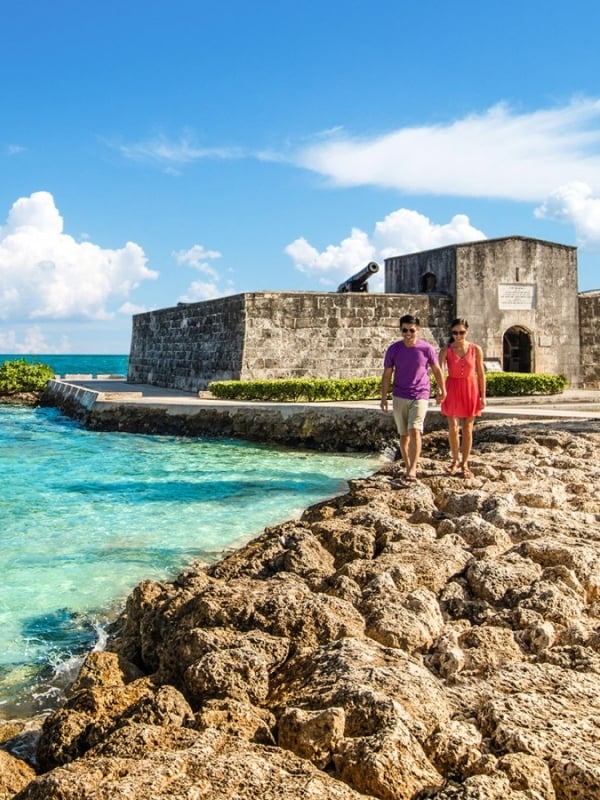The Queen's Staircase
Take an historic walk up (or down) the stairs of the Queen’s Staircase, Nassau’s most visited attraction. In no small part because of its historic significance and method of construction, you’ll feel as if you’ve taken a step back in time.
The History
Towards the end of the 18th century, The Bahamas was a target for European marauders who wanted control of the Caribbean. Since the British had already colonized the country, they were fearful of an invasion, so a number of forts were built including Fort Fincastle, Fort Montagu, and Fort Charlotte (all of which remain standing today).
The Staircase
Named for Queen Victoria who became queen of the United Kingdom in 1837, the Queen’s Staircase was chiselled from solid limestone by former enslaved persons. Also known as “The 66 Steps”, the staircase was built in the remains of a stone quarry and stands at 31m tall. The steps serve as public access between Fort Fincastle and the town of Nassau. Over time indiscriminate paving has reduced the number of steps to 64.
This iconic site not only serves as a physical connection between the fort and the city but also as a powerful reminder of the island's past. Today, the Queen's Staircase stands as a popular tourist attraction and a symbol of resilience, highlighting the enduring spirit of the Bahamian people.
In February, 2024, The Nassau Paradise Island Promotion Board launched a comprehensive restoration project for The Queen’s Staircase. Through this $200,000 initiative, the Promotion Board aims to preserve and enhance this iconic spot steeped in rich history, ensuring its beauty for generations to come.
Queen’s Staircase
Discover one of Nassau’s most sacred spaces – the Queen’s Staircase – and learn about the historical significance of this serene place.













